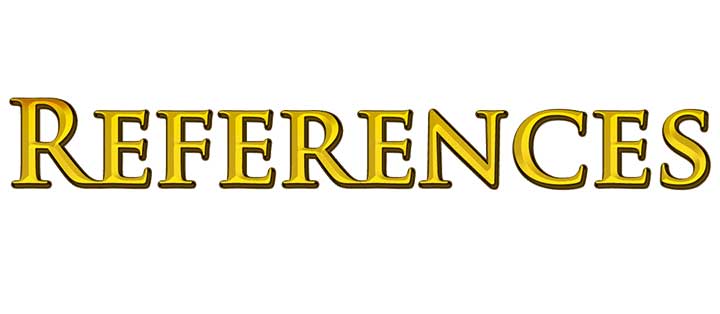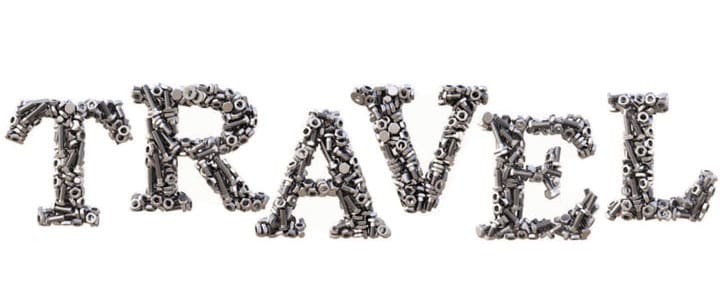American Nurse Today
July 2008
References
Caring for chronic wounds: A knowledge update
Burrows C, Miller R, Townsend D, et al. Best practice recommendations for the prevention and treatment of venous leg ulcers: Update 2006. Adv Skin Wound Care. 2007;20(11):611-624.
Collins N. Nutrition and wound healing: strategies to improve patient outcomes. Wounds. 2004;16(suppl 9):12S-18S.
Evans E. Nutritional assessment in chronic wound care. J Wound Ostomy Continence Nurs. 2005;32(5):317-320.
Kingsley A. The wound infection continuum and its application to clinical practice. Ostomy Wound Manage. 2003;49(suppl 7A):1-7.
National Pressure Ulcer Advisory Panel. Pressure ulcer stages revised by NPUAP. http://www.npuap.org/resources/educational-and-clinical-resources/npuap-pressure-injury-stages/. Accessed May 28, 2008.
Nix DP. Patient assessment and evaluation of healing. In Bryant RA, Nix DP, eds. Acute and Chronic Wounds: Current Management Concepts. St. Louis, MO: Mosby; 2007.
Nursing Educational Programs and Services. Dressing Selection Based on Stage, Exudate, and Wound Bed Appearance. Ridgeland, SC: Nursing Educational Programs and Services; 2006.
Ovington L. Hanging wet dressings out to dry. Adv Skin Wound Care. 2002;15(2):79-86.
Ramundo JM. Wound debridement. In Bryant RA, Nix DP, eds. Acute and Chronic Wounds: Current Management Concepts. St. Louis, MO: Mosby; 2007:176-192.
Serena TE. Managing the wound microenvironment. Wounds. 2005;17(8)(suppl):7-11.
Somerset MA, ed. Wound Care Made Incredibly Easy. Philadelphia, PA: Lippincott Williams & Wilkins; 2007.
Stotts NA, Wipke-Tevis DD, Hopf HW. Cofactors in impaired wound healing. In Krasner DL, Rodeheaver GT, Sibbald RG, eds. Chronic Wound Care: A Clinical Source Book for Healthcare Professionals. Malvern, PA: HMP Communications; 2007:215-220.
van Rijswijk L, Catanzaro J. Wound assessment and documentation. In Krasner DL, Rodeheaver GT, Sibbald RG, eds. Chronic Wound Care: A Clinical Source Book for Healthcare Professionals. Malvern, PA: HMP Communications; 2007:113-126.
Wound, Ostomy and Continence Nurses Society. Guideline for Prevention and Management of Pressure Ulcers. Glenview, IL: Wound, Ostomy and Continence Nurses Society; 2003.
Coping with the crisis of unexpected job loss
Kelly K. Coping with unexpected job loss: personal and professional considerations. Voice of Nursing Leadership. 2006;4(4):6-7,12.
Maurier WL, Northcott HC. Job uncertainty and health status for nurses during restructuring of health care in Alberta. West J Nurs Res. 2000;22:623-641.
Sportsman S. So, you’ve been downsized. Am J Nurs. 1999;99(2):24F-24G.
Vinokour AD, Schul Y. The web of coping resources and pathways to re-employment following a job loss. J Occup Health Psychol. 2002;7(1):68-83.
Managing skin reactions to targeted cancer therapy
Fox L. Pathology and management of dermatologic toxicities associated with anti-EGFR therapy. Oncology (Williston Park). 2006;20:26-34.
Lacouture M. Mechanisms of cutaneous toxicities to EGFR inhibitors. Nat Rev Cancer.
2006;6:803-812.
Lynch T, Kim E, Eaby B, Garey J, West D, Lacouture M. Epidermal growth factor receptor (EGFR) inhibitor–associated rash: an evolving paradigm in clinical management. Oncologist.
2007;12(5):610-621. http://theoncologist.alphamedpress.org/content/12/5/610.full
full/12/5/610. Accessed October 17, 2007.
NCI Common Terminology Criteria for Adverse Events v3.0 (CTCAE), 2006. http://ctep.cancer.gov/forms/CTCAEv3.pdf. Accessed October 17, 2007.
No more nurse abuse
American Association of Critical-Care Nurses. AACN standards for establishing and sustaining healthy work environments: a journey to excellence. http://ajcc.aacnjournals.org/cgi/content/citation/14/3/187. Accessed April 23, 2008.
American Association of Critical-Care Nurses. Zero tolerance for abuse [position statement]. April 12, 2004. www.aacn.org/AACN/pubpolcy.nsf/vwdoc/pmp. Accessed April 23, 2008.
American Nurses Association. Workplace abuse and harassment of nurses. http://www.nursingworld.org/. Accessed April 23, 2008.
American Organization of Nurse Executives. AONE 2006 education and research priorities. http://www.aone.org/aone-foundation/docs/researchpriorities.pdf. Accessed April 23, 2008.
Anderson C. Workplace violence: are some nurses more vulnerable? Issues Ment Health Nurs. 2002;23:351-366.
Cardillo D. End workplace abuse. dcardillo.com/articles/workplaceabuse.html. Accessed April 23, 2008.
DeMarco R, Roberts S. Negative behaviors in nursing: looking in the mirror and beyond. AJN. 2001;103(3):26-33.
Elliott P. Violence in health care: what nurse managers need to know. Nurs Manage. 1997;28:38-41.
Greene J. The medical workplace: no abuse zone. Hosp Health Netw. 2002;6:26-28.
Hegney D, Plank A, Parker V. Workplace violence in nursing in Queensland, Australia: a self-reported study. Int J Nurs Pract. 2003;9:261-268.
International Council of Nurses. Guidelines on coping with violence in the workplace. http://hrhresourcecenter.org/node/1142. Accessed April 23, 2008.
McKenna BG, Smith NA, Poole SJ, Coverdale JH. Horizontal violence: experiences of registered nurses in their first year of practice. J Adv Nurs. 2003;42(1):90-96.
National Association of School Nurses. Consensus statement: principles and elements of a healthful work environment. http://www.nasn.org/Portals/0/statements/consensusenvironment.pdf. Accessed April 23, 2008.
National Institute for Occupational Safety and Health. Violence: occupational hazards in hospitals. www.cdc.gov/niosh/2002-101.html. Accessed April 23, 2008.
New York State Nurses Association. Workplace violence [position statement]. http://www.nysna.org/workplace-violence#.WWOgU2eWyP8. Accessed April 23, 2008.
Nursing Organizations Alliance. Principles & elements of a healthful practice/work environment. http://www.nursing-alliance.org/. Accessed April 23, 2008.
Occupational Safety and Health Administration. Workplace violence. http://www.osha.gov/SLTC/workplaceviolence. Accessed April 23, 2008.
Sofield L, Salmond S. Workplace violence: a focus on verbal abuse and intent to leave the organization. Orthop Nurs. 2003;22:274-283.
Thomas S. Horizontal hostility. Nurses against themselves: how to resolve this threat to retention. AJN. 2003;103(10):87-88, 90-91.
Pheochromocytoma: Not your everyday diagnosis
Daub K. Pheochromocytoma: challenges in diagnosis and nursing care. Nurs Clin North Am. 2006;42:100-111.
Kuddva Y, Sawka A, Young W. The laboratory diagnosis of adrenal pheochromocytoma: The Mayo Clinic Experience. J Clin Endocrinol Metab. 2003;10:4533-4539. http://jcem.endojournals.org/cgi/content/full/88/10/4533. Accessed November 6, 2007.
Manger WM. An overview of pheochromocytoma. History, current concepts, vagaries and diagnostic challenges. Ann NY Acad Sci. 2006;1073:1-20.
National Cancer Institute. Pheochromocytoma treatment. www.cancer.gov/cancertopics/pdq/treatment/pheochromocytoma/healthprofessional. Accessed November 6, 2007.
Torrey S. Recognition and management of adrenal emergencies. Emerg Med Clin North Am. 2007;23(3):687-702.
Spotting and stopping increased intracranial pressure
Arbour R. Intracranial hypertension: monitoring and nursing assessment. Crit Care Nurse. 2004;24(5):19-32.
Brain Trauma Foundation. Guidelines for the management of severe traumatic brain injury: 3rd edition. J Neurotrauma. 2007;24(suppl 1):S1-S106.
The wisdom of renewal
Hudson F. The Adult Years: Mastering the Art of Self-Renewal. San Francisco, Calif: Jossey-Bass; 1999. Available at: www.hudsoninstitute.com/. Accessed March 20, 2007.
Kurth K, Schmidt S. Running on Plenty at Work: Renewal Strategies for Individuals. Potomac, Md: Renewal Resources Press; 2003. Available at: www.renewalatwork.com/1books.htm. Accessed March 20, 2007.
Miller T. Building and Managing a Career in Nursing: Strategies for Advancing Your Career. Indianapolis, Ind: Sigma Theta Tau International; 2003. Available at: www.nursingsociety.org. Accessed March 20, 2007.
Pesut D. Healing into the future: Recreating the profession of nursing through inner work. In: Chaska N, ed. The Nursing Profession: Tomorrow and Beyond. Thousand Oaks, Calif: Sage; 2001:853-867.
Sigma Theta Tau International. Scholarship of Reflective Practice Resource Paper. Available at: www.nursingsociety.org/about/resource_reflective.doc. Accessed March 20, 2007.
Sternberg R. A balance theory of wisdom. Rev Gen Psych. 1998;2:347-365.
Sternberg R. Words to the wise about wisdom. Hum Dev. 2004;47:286-289.


















